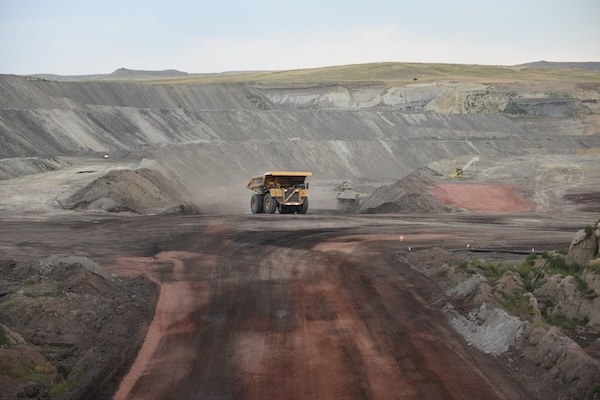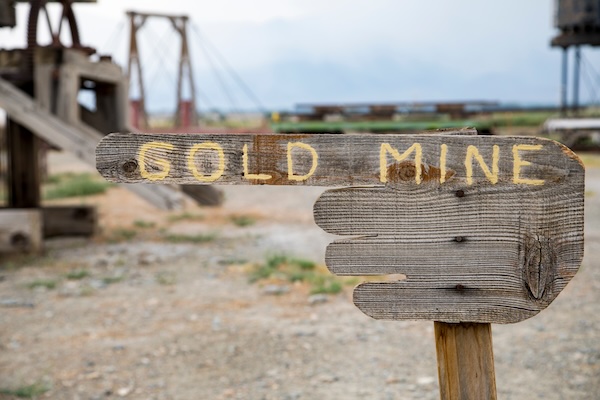US Gold Corp passed another milestone in the development of the CK Gold Project, receiving clearance from the Wyoming Department of Environmental Quality.
“Having previously been granted the Industrial Siting Permit in June last year and now the Mine Operating Permit we have cleared the major regulatory hurdles towards project development,” CEO George Bee said in a statement.
“We remain on track to receive the necessary permits around mid-year, as per prior guidance,” Bee said.
The CK Gold Project is an advanced stage gold and copper project named after the Copper King mine that being developed by U.S. Gold Corp. in the Silver Crown mining district about 20 miles west of the city of Cheyenne, Wyoming.
The project encompasses more that 1,000 acres of land, including 360 acres from a local rancher, and involves an open-pit mine that aims to extract 1 million ounces of gold and 248 million pounds of copper from high-grade mineralization deposit.

With an estimated capital investment of $221 million, the mine is expected to produce copper concentrate with a life of mine (LOM) of ten years, averaging 108,500 troy ounces of gold-equivalent production per year.
The area has a rich history of mining, with the Copper King Mine being developed in 1881 by the Adams Copper Mining and Reduction Company.
The project has experienced high-grading and limited mining in its early stages. The first exploration work reported is drilling by ASARCO in 1938.
Gold Mining in Wyoming
Gold was first discovered in Wyoming in the early 1800s, but the Wyoming gold rush truly began in 1867 with the discovery of a large deposit near South Pass City. The Wyoming Gold Rush continued through the 1870s, attracting prospectors from all over the world, and by the end of the decade, Wyoming’s population had grown tenfold.

The gold mining industry in Wyoming was concentrated near the southern border with Colorado border. Early discoveries were made in the Sweetwater River area, and the South Pass-Atlantic City and Douglas Creek districts were among the most productive, each yielding more than 10,000 ounces of gold.
The industry began to decline in the 1880s due to the depletion of easy-to-reach gold deposits and the increasing cost of extracting gold from deeper veins.
China’s Global Dominance in Metals and Minerals
China has been actively developing and exploiting critical mineral mining in Africa, South America, and Asia, particularly focusing on securing its supply chains of critical minerals essential for various industries, including technology and green energy.
In Africa, China has made significant investments and holds a dominant position in the critical minerals supply chains. For instance, China’s CMOC Group invested more than $1.8 billion opening the Kisanfu mine in Democratic Republic of Congo (DRC) in 2022, overtaking Glencore as the world’s largest producer of cobalt, a crucial element in electric vehicle batteries.
The DRC supplies 70% of the world’s cobalt and this move reflects China’s strategic efforts to maintain control over the global supply of critical minerals.
In South America, China has been expanding its influence through investments and partnerships within the lithium mining sector in Argentina, one of the countries with the largest lithium reserves in the world.
Rare earth elements are essential for the production of high-tech products, including smartphones, wind turbines, and electric vehicles.
Other US Mining Projects
Beyond the CK Gold Project in Wyoming, the U.S. Geological Survey (USGS) has identified more than 200 mineral districts, mines, and mineral occurrences within the United States that contain substantial enrichments of rare earth elements (REEs), which are critical for modern technologies like electric vehicles, renewable energy systems, and electronics.
These occurrences are a mix of mined deposits, exploration prospects, and other sites that have not been fully exploited.
Additionally, the USGS has highlighted the potential of significant critical mineral deposits in the United States.
Critical minerals are essential for the economy and society, and they play a vital role in various high-tech devices and renewable energy technologies.
Some of the critical minerals include rare earth elements, lithium, indium, tellurium, gallium, and platinum group elements.
These minerals are crucial for the production of wind turbines, solar panels, and electronics like smartphones and tablets.
The demand for critical minerals is expected to increase significantly in the coming years as the world transitions towards renewable energy and low-carbon technologies to achieve net-zero emissions targets.
These critical minerals are vital for the national economy, national security and technological advancements. Both the Department of Energy and the Department of Defense have stated that the exploration, development, and responsible extraction of these domestic minerals and metals is crucial for the U.S. to maintain its competitive edge in the global market and reduce dependency on foreign sources.






